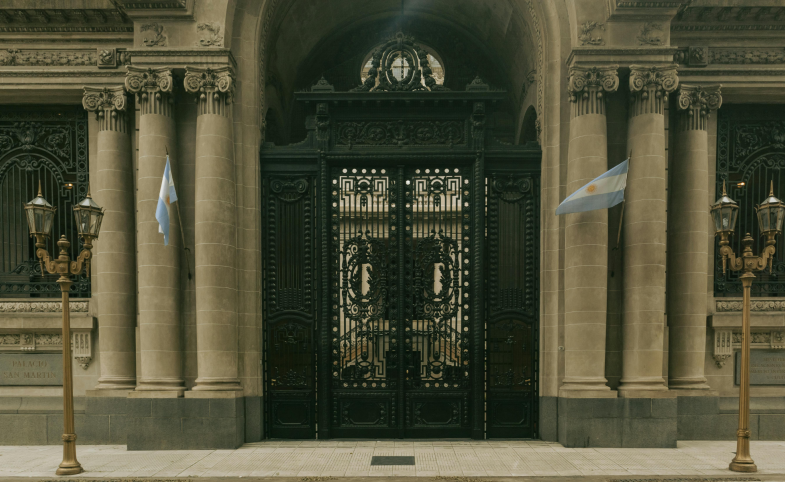The CPD Blog is intended to stimulate dialog among scholars and practitioners from around the world in the public diplomacy sphere. The opinions represented here are the authors' own and do not necessarily reflect CPD's views. For blogger guidelines, click here.

Where Did Diplomacy Go?
Everyone recognizes diplomacy, fewer can explain what it looks like today. Did diplomacy leave the conversation? Diplomacy still exists. But the world has stopped watching. It stepped back before anyone noticed. The process still functions. Drafts are still written. But something is off. It has simply become unreadable to the people who once followed it.
Younger generations know diplomacy exists. They see the headlines. They see the photographs. They hear the terminology. But they do not know what it means for their lives. It sounds formal. But it also feels detached. As Nicholas Cull explains in Public Diplomacy: Taxonomies and Histories, the legitimacy of diplomacy is increasingly shaped by how it is experienced outside formal channels. Diplomacy refined itself into distance. Its language became more technical. Its gates became tighter. Its vocabulary more rigid. The public was not shut out deliberately. It was simply no longer invited in. Today, the public, especially students and younger professionals, cannot explain what diplomacy does or where it happens. That is not a small detail. It creates distance between people and one of the few instruments still capable of building cooperation in a fragmented world.
Public perception of diplomacy has changed. Not because people turned against it. But because they stopped feeling like it had space for them. The wall was not meant to be a wall. But it stood where a window should have been. Public diplomacy tried to fix this. In name, it did. In practice, it often did not. It stayed close to messaging. But rarely redesigned access. Visibility was mistaken for engagement. Events were mistaken for dialogue. Appearances were mistaken for participation.
We do not need to dismantle diplomacy. We need to return it to proximity. Not through new slogans. Through real spaces. Through better presence. That presence begins with conversation. As Joseph Nye emphasizes in Public Diplomacy and Soft Power, successful influence does not rely on volume. It relies on recognition. People are moved by being seen and being heard. What would presence look like? It would look like community dialogue sessions that are not symbolic. It would look like open hours from actual staff. It would look like student fellowships that contribute to operations. Not for marketing. For meaning. It would look like early policy drafts being shared briefly for feedback. But to verify relevance. It would look like letting students watch how conversations unfold. So they can see themselves not as spectators, but as part of the process.
As Christer Jönsson argues in Communication: An Essential Aspect of Diplomacy, diplomatic effectiveness is deeply tied to clarity and accessibility. These changes are not cosmetic. They are foundational. Students do not want to be given diplomacy. They want to be shown where it is. What it looks like. What it does. How it moves. That understanding does not come from lectures. It comes from inclusion.
When diplomacy is hidden, it becomes misread. The solution is not to simplify. The solution is to include. You do not need to make diplomacy more exciting. You need to make it more available. As Daniel Brinks and Abby Blass point out in The Limits of Institutional Design, public trust is no longer built through position alone. It is built through relationship. People want to know the logic behind decisions. They want to feel like they have the right to understand. Diplomacy has not collapsed. It has simply drifted.
The mission is still strong. The infrastructure still matters. But the rhythm is out of step. The tone needs to be adjusted. The proximity needs to be repaired. If diplomacy wants to stay relevant, it must reenter the public space. It must choose visibility that includes participation. It must go where the questions are being asked.
"Public perception of diplomacy has changed. Not because people turned against it. But because they stopped feeling like it had space for them."
Diplomacy must remember its audience. The path forward is not more language. It is more access. Modern influence does not emerge from posture. It grows through contact. Through transparency. Through proximity. If diplomacy remains locked inside process, it will continue to be perceived as distant. But if it invites participation early, it will rebuild its function. This is not a communications exercise. It is a professional responsibility.
As the field continues to evolve, so must its tone. The world is not less complex than before. But the tools for understanding it are more available. And diplomacy must meet the public in that space. Not with slogans. With structure. Policy cannot be isolated from perception. Process cannot be removed from participation. Relevance is not automatic. It is earned through presence. It is sustained through recognition.
There is no contradiction between professionalism and public engagement. The future of diplomacy rests not in volume, but in visibility that includes voice. It must be voice that feels close. Not loud. Not distant. Not wrapped in terms nobody uses. But in tone that lands where people actually live. Especially students. Especially communities waiting for context.
Diplomacy does not need rebranding. It needs reopening. Its strength is not just in what it knows. It is in what it invites. A new kind of access can restore what was lost. Not with performance. With presence. Not with optics. With openness. That is not modernizing diplomacy. That is remembering what made it work to begin with. And if we want diplomacy to last, it must learn to enter the room again. Quietly. Clearly. Early. Before it is missed. What sustains credibility is not performance. It is process. What strengthens trust is not reach. It is access. And what protects diplomacy over time is not repetition. It is relevance. Relevance must be maintained. And access must be structured. Neither happen by accident. Both begin with presence.
This article was first published with rEUconnecting Digital Magazine.
Visit CPD's Online Library
Explore CPD's vast online database featuring the latest books, articles, speeches and information on international organizations dedicated to public diplomacy.
POPULAR ARTICLES
-
November 3
-
November 5
-
October 16
-
October 16
-
October 6
Join the Conversation
Interested in contributing to the CPD Blog? We welcome your posts. Read our guidelines and find out how you can submit blogs and photo essays >.









